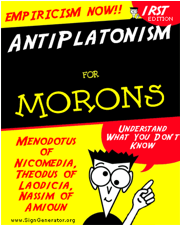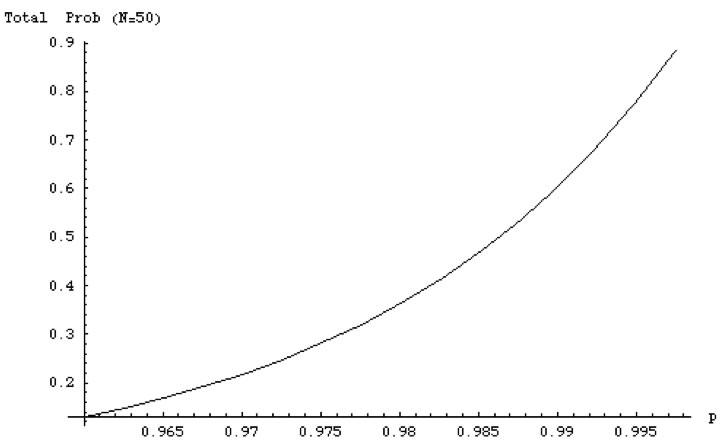Sustentabilidade
That policy was designed only 8 years ago. Their one in a million-year accident occurred about 8 year later. We are clearly in the Fourth Quadrant there.
I spent the last two decades explaining (mostly to finance imbeciles, but also to anyone who would listen to me) why we should not talk about small probabilities in any domain. Science cannot deal with them. It is irresponsible to talk about small probabilities and make people rely on them, except for natural systems that have been standing for 3 billion years (not manmade ones for which the probabilities are derived theoretically, such as the nuclear field for which the effective track record is only 60 years).
- Comunidade Casa E Jardim
Como agora tb estou aqui, resolvi dar uma xeretada em tudo e encontrei dicas bem legais de reaproveitamento. Bjs a todos ! Visit ArteReciclagem http://artereciclagem.ning.com/ http://revistacasaejardim.globo.com/...
- Relatório Impressionante Do Instituto De Radioprotecção E De Segurança Nuclear Sobre Fukushima
Japanese artist Isao Hashimoto has created a beautiful, undeniably scary time-lapse map of the 2053 nuclear explosions which have taken place between 1945 and 1998, beginning with the Manhattan Project's "Trinity" test near Los Alamos and concluding...
- Recente Relatório Sobre Nuclear, Da Union Of Concerned Scientists Conclui Que Energia Nuclear Continua Inviável, Mesmo Com Subsídios Estatais
Descarrega aqui: Nuclear Power: Still Not Viable without Subsidies (2011) | Nuclear Power Subsidies: Executive Summary (2011)Publicado em 15/02/11Government subsidies to the nuclear power industry over the past fifty years have been so large in proportion...
- A Um Quarto De Século Após Chernobyl, Javalis Radiactivos Na Alemanha
Spiegel International, by Charles Hawley dpaAnyone have a Geiger counter? As Germany's wild boar population has skyrocketed in recent years, so too has the number of animals contaminated by radioactivity left over from the Chernobyl nuclear...
- Ciência: Portugal Bem Colocado (7º) , Bem à Frente Dos Eua E Gb, De Acordo Com Science Metrix
Who will be the next science and technology (S&T) superpowers? Por Walter Derzko Want to know who will be economically stronger in the next decade or two? It will most likely be countries that have good emerging science and technology capabilities...
Sustentabilidade
Criminal Stupidity of Statistical Science
 |
| Nassim Nicholas Taleb |
Time to understand a few facts about small probabilities [criminal stupidity of statistical science]
The Japanese Nuclear Commission had the following goals set in 2003: " The mean value of acute fatality risk by radiation exposure resultant from an accident of a nuclear installation to individuals of the public, who live in the vicinity of the site boundary of the nuclear installation, should not exceed the probability of about 1x10^6 per year (that is , at least 1 per million years)".That policy was designed only 8 years ago. Their one in a million-year accident occurred about 8 year later. We are clearly in the Fourth Quadrant there.
I spent the last two decades explaining (mostly to finance imbeciles, but also to anyone who would listen to me) why we should not talk about small probabilities in any domain. Science cannot deal with them. It is irresponsible to talk about small probabilities and make people rely on them, except for natural systems that have been standing for 3 billion years (not manmade ones for which the probabilities are derived theoretically, such as the nuclear field for which the effective track record is only 60 years).
1) Small probabilities tend to be incomputable; the smaller the probability, the less computable. (Forget the junk about "Knightian" uncertainty, all small probabilities are incomputable). (See TBS, 2nd Ed., or Douady and Taleb, Statistical undecidability, 2011.)
2) Model error causes the underestimation of small probabilities & their contribution (on balance, because of convexity effects). Any model error, just as any undertainty about flying time causes the expected arrival to be delayed (you rarely land 4 hours early, more often 4 hours late on a transatlantic flight, so "unforeseen" disturbances tend to delay you). See my argument about second order effects with my paper. [INTUITION: uncertainty about the model used for calculation of random effects causes a second layer of randomness, causing small probabilities to rise on balance].
3) The problem is more acute in Extremistan, particularly the manmade part. The probabilities are undestimated but the consequences are much, much more underestimated.
4) As I wrote, because of globalization, the costs of natural catastrophes are increasing in a nonlinear way.
5) Casanova problem (survivorship bias in probability): If you compute the frequency of a rare event and your survival depends on such event not taking place (such as nuclear events), then you underestimated that probability. See the revised note 93 on αδηλων.
6) Semi-technical Examples: to illustrates the point (how models are Procrustean beds):
Case 1: Binomial
Take for example the binomial distribution with B[N, p] probability of success (avoidance of failure), with N=50. When p moves from 96% to 99% the probability quadruples. So small imprecision around the probability of success (error in its computation, uncertainty about how we computed the probability) leads to enormous ranges in the total result. This shows that there is no such thing as "measurable risk" in the tails, no matter what model we use.
Case 2: More scary. Take a Gaussian, with the probability of exceeding a certain number, that is, . 1- Cumulative density function.. Assume mean = 0, STD= 1. Change the STD from 1 to 1.1 (underestimation of 10% of the variance). For the famed "six sigmas", the area in the tails explodes by 2400%. For the areas above 10 sigmas (common in economics), the area explodes by trillions. (More on the calculations in my paper).
loading...
- Comunidade Casa E Jardim
Como agora tb estou aqui, resolvi dar uma xeretada em tudo e encontrei dicas bem legais de reaproveitamento. Bjs a todos ! Visit ArteReciclagem http://artereciclagem.ning.com/ http://revistacasaejardim.globo.com/...
- Relatório Impressionante Do Instituto De Radioprotecção E De Segurança Nuclear Sobre Fukushima
Japanese artist Isao Hashimoto has created a beautiful, undeniably scary time-lapse map of the 2053 nuclear explosions which have taken place between 1945 and 1998, beginning with the Manhattan Project's "Trinity" test near Los Alamos and concluding...
- Recente Relatório Sobre Nuclear, Da Union Of Concerned Scientists Conclui Que Energia Nuclear Continua Inviável, Mesmo Com Subsídios Estatais
Descarrega aqui: Nuclear Power: Still Not Viable without Subsidies (2011) | Nuclear Power Subsidies: Executive Summary (2011)Publicado em 15/02/11Government subsidies to the nuclear power industry over the past fifty years have been so large in proportion...
- A Um Quarto De Século Após Chernobyl, Javalis Radiactivos Na Alemanha
Spiegel International, by Charles Hawley dpaAnyone have a Geiger counter? As Germany's wild boar population has skyrocketed in recent years, so too has the number of animals contaminated by radioactivity left over from the Chernobyl nuclear...
- Ciência: Portugal Bem Colocado (7º) , Bem à Frente Dos Eua E Gb, De Acordo Com Science Metrix
Who will be the next science and technology (S&T) superpowers? Por Walter Derzko Want to know who will be economically stronger in the next decade or two? It will most likely be countries that have good emerging science and technology capabilities...

